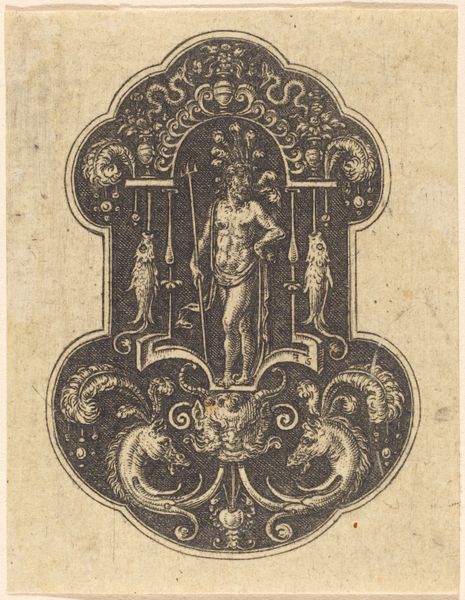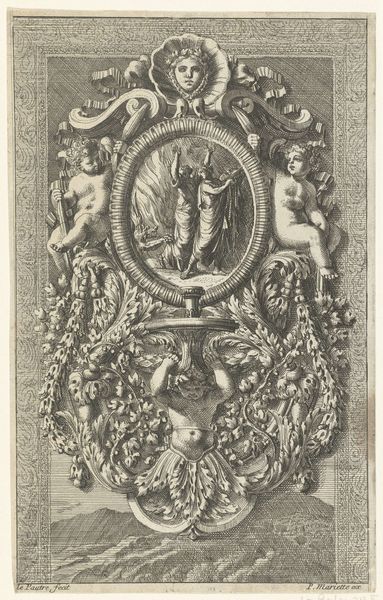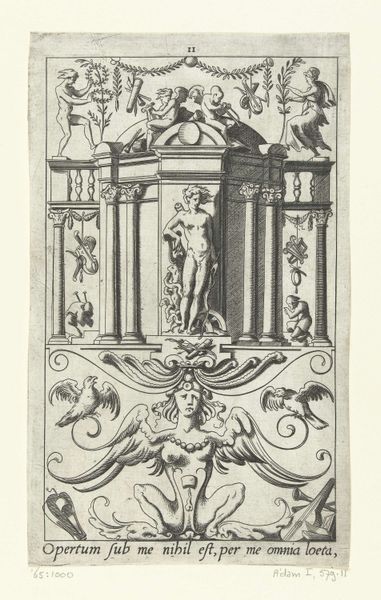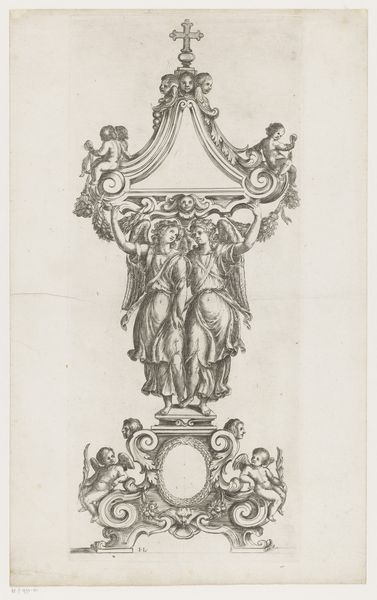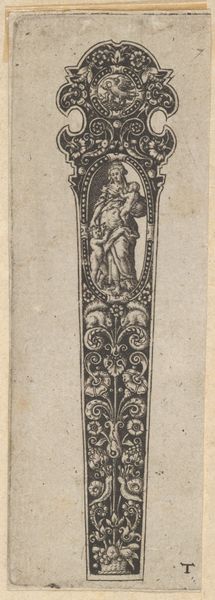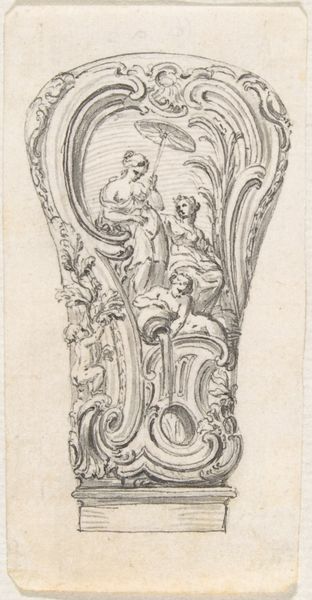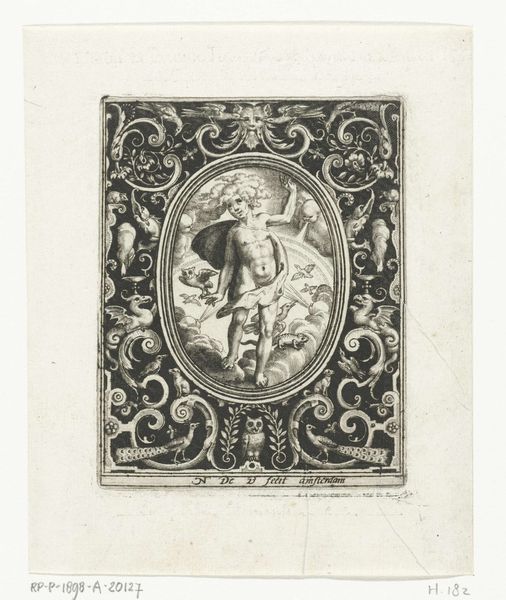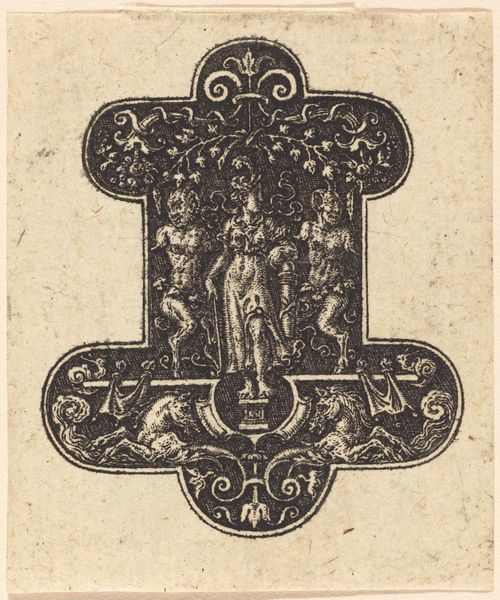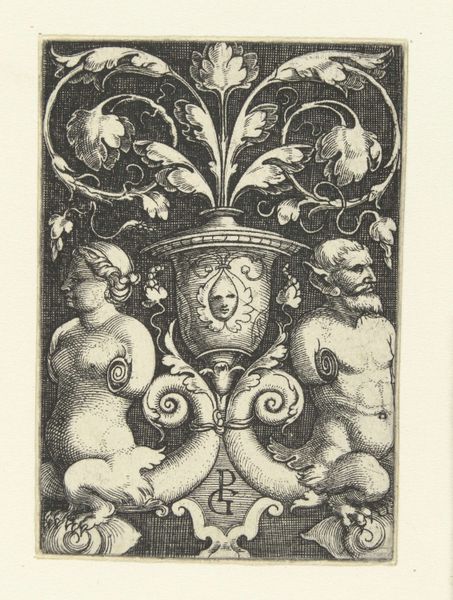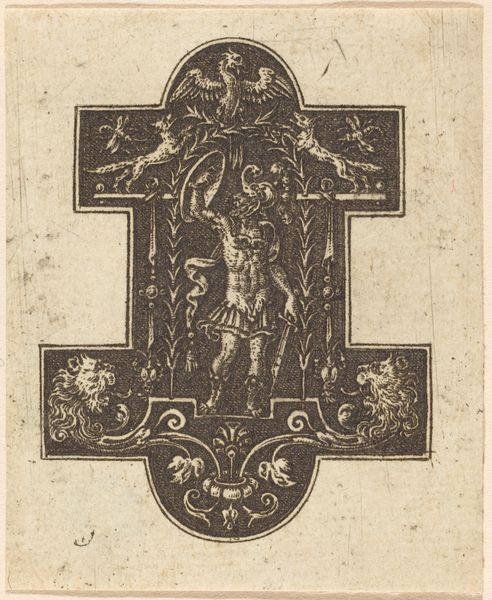
Pendant Design with Adam and Eve, from Des Pendants de Cleffs pour les Femmes 1580 - 1600
0:00
0:00
drawing, print, engraving
#
drawing
#
allegory
# print
#
figuration
#
11_renaissance
#
northern-renaissance
#
nude
#
engraving
Dimensions: Sheet: 3 5/8 × 1 1/8 in. (9.2 × 2.9 cm)
Copyright: Public Domain
Editor: Here we have Johann Theodor de Bry's "Pendant Design with Adam and Eve" from around 1580 to 1600, a Northern Renaissance engraving and drawing. What strikes me is the stark contrast between the lush ornamentation and the somber depiction of Adam and Eve. What do you make of the symbolic elements here? Curator: Indeed, it is quite a juxtaposition! Notice how the central image of Adam and Eve isn't simply about their creation or even the temptation, but prominently features a skeleton. This represents mortality, brought on by their disobedience. The image functions as a _memento mori_ or a symbolic reminder of the inevitability of death. Considering the pendant’s function as an adornment, what does that suggest to you about the wearer's perspective? Editor: It suggests a consciousness of morality and an embrace, perhaps, of both earthly beauty and the inevitability of death. It's less a celebration of life and more a complex acknowledgement of it's fragility. But why would a woman wear something like that? Curator: Consider the societal role of women at that time. They were often seen as inherently more susceptible to temptation, thus, reminders of morality would serve not just as personal reflections but also as statements of piety and virtue for public consumption. Don’t you think this challenges modern sensibilities in how women are framed? Editor: Absolutely! I see that now; the symbolism layered within these pendants is incredible. I had originally looked at it for the ornamental style, but I see it’s about so much more. Thanks for sharing your insights on its symbolism, I now feel like I am seeing it with fresh eyes.
Comments
No comments
Be the first to comment and join the conversation on the ultimate creative platform.
